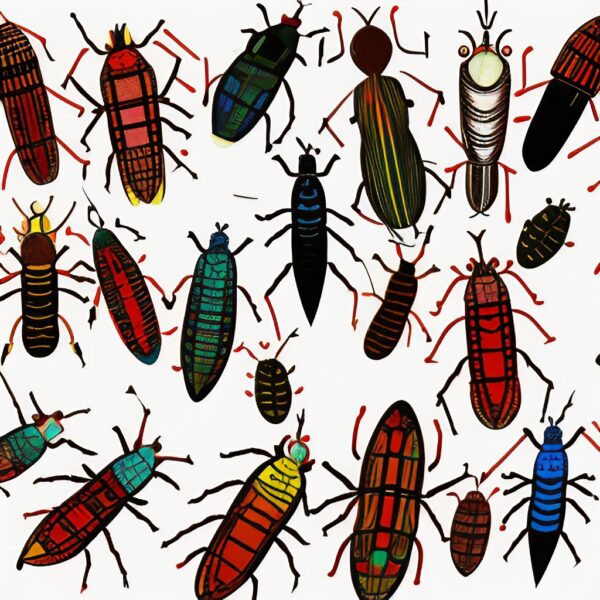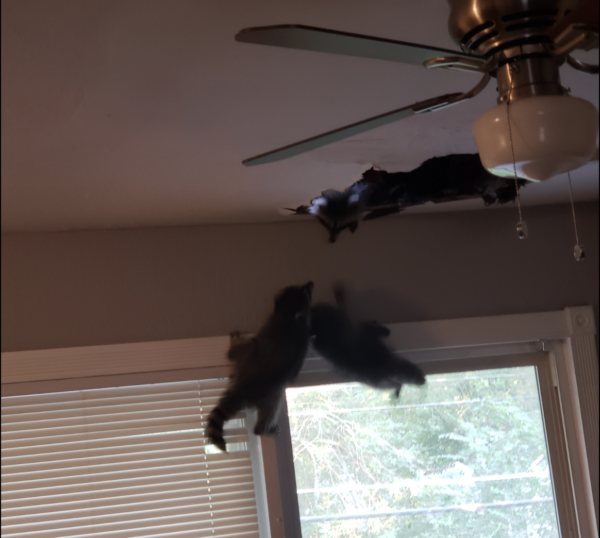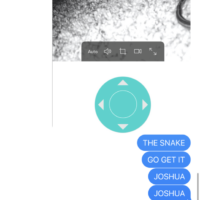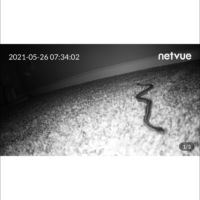
Who is responsible for pest control in a rental property?
Anytime my wife sees an insect, she looks at me like it’s my fault.
Ants in the house? I didn’t spray well enough.
Flies in the house? I left the door open.
Spiders? You better bet that’s my fault too.
Don’t even mention the word mouse.
Luckily she was out of town when I found a snake in my basement.
Well, for the sake of this example, your renters are like my wife. Any time they see a pest, you come to their mind. You are to be blamed for any of the slightest signs of pests in their home (at least according to them).
All of that brings up an excellent question. Who is responsible for pest control in a rental property? Is the tenant responsible for pest control or the landlord?
There’s a lot packed into this question. Some property managers have determined preventive pest control is the resident’s responsibility and even built it into lease agreements. In other cases, they want to be the responsible party in effort to prevent bigger problems.
Simply put, landlords are responsible for pest control in rental properties (unless otherwise stated in the lease). The main exception is when the tenant is at fault for any infestation or pest problem (which is common). The key to this is knowing the signs for determining who is at fault for the problem.
How can you determine who is responsible for a pest infestation?
As mentioned above, the only way a resident will be responsible for pest control is if they cause (or welcome) an infestation. When you schedule your pest control Pro, ask him to document some of the conditions of the house. Also, ask him if he thinks the conditions might attract the pests.
Insects and rodents are drawn to food and clutter. If food is constantly left out, pests are eventually going to find it. Just like a property manager is required to keep a property in a livable condition, the resident must do their part as well.

Again, I can use my own home as an example (no, that is not a picture of my kitchen). When our son was first born, we had an influx of boxes from the baby supplies and middle of the night Amazon purchases. This resulted in a pile of boxes in our garage that begged to be recycled. The pile of junk, combined with our dog treat stash, invited an extended family of mice to stay at Hotel Matteson.
To this day, my wife doesn’t know how many mice I caught in our house. While I caught over 10, there’s no telling how many more might have been hiding in our walls. My love, consider this my public admission and apology for not telling you sooner.
How can you prevent pests in rental properties?
You can prevent pest infestations in your rental properties with these four simple steps:
- Apply weather stripping around all of the exterior doors.
First and foremost, applying weather stripping around all exterior doors can help keep pests from finding their way inside. This helps create a barrier that unwelcome guests will have a difficult time crossing. - Seal any holes or entry points around the property.
Sealing holes or entry points around the property is another crucial step in preventing infestations. Pests are experts at finding small openings and using them to gain entry into your rental property. By sealing up these areas, you can reduce the likelihood of a pest invasion. - Have the property regularly sprayed.
Regularly spraying the property is another effective way to keep pests at bay. It’s important to work with a professional pest control company that can provide you with the right solutions for your property’s unique needs. - Provide the tenant with pest prevention instructions.
Finally, providing your tenants with pest prevention instructions can go a long way in helping to prevent infestations. Simple tips like not leaving food out and reporting any signs of pests promptly can make a big difference in keeping your property pest-free.
By following these four simple steps, you can greatly reduce the risk of pest infestations in your units. Remember, prevention is key when it comes to pest control!
What are the most common pests in rentals?
Here at Lula, we’ve seen almost every pest you can imagine. However, there are a few vermin that we see requested more often than others.
- Bees/hornets — This is one of the top requests we get when it comes to pest control. Tenants are afraid of wasps, especially when they have children.
- Termites or Carpenter Ants — Termites in rental properties can cause significant damage to the structure of a building, leading to expensive repairs and potential safety hazards. It’s crucial for landlords to have regular inspections and for tenants to report any signs of infestation promptly. Prevention and early intervention are key in avoiding long-term damage.
- Mice — These critters love the great indoors. Humans leave an endless supply of food around and seem to be decent roommates. The telltale sign of mice is the tiny droppings they leave behind. If residents see a pile of droppings and report it, it’s best to get ahead of it and call the pest control company. If you have an in-house maintenance team, you might be able to catch them with one of these bad boys:
- Roaches — Roaches in rental properties can be a nightmare for tenants and landlords alike. They can spread quickly and be hard to evict, causing health concerns and property damage. It’s important for both parties to take preventive measures and address any infestations promptly.
- Ants — Ants are one of the easiest insects to mitigate when problems start. You can usually trace them to a source, spray, and place ant traps to eliminate the problem. If residents are comfortable with it, you can even send them some ant traps so they can put them out themselves.
- Raccoons/Squirrels — These animals like to live in your attic. If you have trees hanging over your roof, they will have easy entry. Don’t believe me? Check out this picture.

How often is pest control needed in rentals?
Preventive pest control – the unsung hero of the pest control world. It’s like the Robin to Batman or the Samwise Gamgee to Frodo Baggins. You may not always see it, but it’s working hard behind the scenes to keep your rentals safe from pesky critters.
So, how often is preventive pest control needed? Well, it all depends on a few factors. Let’s break it down.
First of all, let’s talk about the location. Are your properties in the heart of the city, surrounded by concrete and high-rises? Or are you out in the country, surrounded by fields and forests? Different areas have different pest populations, so your preventive pest control needs will vary based on where you’re located.
Next up, let’s consider your property. Do you have a sprawling mansion with multiple buildings and acres of land? Or are you in a cozy apartment with just a few rooms? The size and layout of your property can also impact how often you need preventive pest control.
Lastly, let’s talk about the pests themselves. Some pests are more resilient than others, and some are more attracted to certain environments. For example, if you live in an area with a lot of moisture, you may be more prone to ant or cockroach infestations.
With all that in mind, how often should you (or your residents) get preventive pest control? The general recommendation is to get it done once a quarter – that’s every three months for those of you who aren’t math whizzes. However, if you live in an area with a high pest population, or if you have a large property with multiple buildings, you may want to consider getting it done more frequently.
Turn Pest Control Into Revenue for Rental Properties
As mentioned repeatedly, pest control is a critical aspect of maintaining the value and livability of any property. As a property manager, you need to be vigilant about keeping pests at bay, but that’s not always easy. Fortunately, PestShare offers an innovative solution that will help your tenants while adding a new revenue stream.
PestShare is a platform that uses technology to bring affordable pest control to rental properties.
By adding PestShare to a resident benefits package, tenants get an affordable solution, owners get peace of mind, and property managers add a couple more bucks to their bottom line.
The True Story of the Snake in My Basement
Now that you learned about pest control, prevention, and responsibility, it’s time to learn how I handled the snake I found in my own basement. For the first time ever, here is the adventurous tale.
The day was March 22nd, 2021. I walked downstairs towards my laundry room when something caught the corner of my eye.
“No way,” I told myself.
I turned to see a snake curled up next to the wall. Snake charmer isn’t exactly my calling, so I struggled with what to do next.

I knew that it was my time to face my fears and grab life by the tail (literally).
When I found the courage to approach the legless devil, he slithered into the wall.
It was that moment that all of my greatest fears came true. There was a snake living in my wall. What if he brings his family? What if they are already there?
I could see his tail poking out from under the trim. This was my last shot and I knew it. I took a deep breath and grabbed the tip of his tail and pulled.
Perhaps my grip was too strong, but all I came away with was the tippy tip of his tail.
After that, my guilt levels equaled my fear levels. I knew I needed to do right by this sneaky snake and relocate him back to the field behind my house. However, I had no idea how I would accomplish that task. The snake was in my wall and I wasn’t about to go cutting holes in the sheetrock.
In 2020, my wife bought a motion camera for our dog. Anytime she moved into a certain area of the house, it would notify us on our phone. I had a theory that she was secretly peeing in the basement (the dog, not my wife), but that’s a story for another time.
I took that camera and placed it in the middle of the living room. I pointed it straight at the wall where the snake got away and I waited.
Four days later, on March 26th, I got this text from my wife:
My first thought was, “I can’t believe that my dog pee camera plan worked.” After that, I knew it was go time.
Here is what ensued:
If that doesn’t inspire you to be proactive with your pest control efforts, I don’t know what will. And yes, that snake was released safely into the wild shortly after he attacked me.
Anything found written in this article was written solely for informational purposes. We advise that you receive professional advice if you plan to move forward with any of the information found. You agree that neither Lula or the author are liable for any damages that arise from the use of the information found within this article


